If your goal is to keep your car in great shape, don't even consider doing any of these things.
15 Things You Should Never Do To Your Car

Never Ignore Rusting
When it comes to things you should never do with your car, ignoring rust isn’t high on most people’s lists, but it should be. The tricky thing about vehicle rust is that it’s almost always worse than it appears on the surface.
If you notice rust bubbling through your vehicle’s paint job, don’t ignore it. Do some careful poking and prodding of the area, and you’ll probably discovered a section of metal beneath the paint at least two or three times larger than the visible rust bubbles. Spots like this need to be stripped back to clean metal, then filled and repainted as soon as possible. Small nicks in the paint that become rusty are likely just surface rust and aren’t as urgent, but still shouldn’t be ignored for long, lest they get worse. Here are some car maintenance basics everyone should know.

Never Overfill the Tires to “Get Better Gas Mileage”
The Internet is brimming with testimonials from people who claim they upped their mileage by inflating their tires to the maximum pressure listed on the sidewall. What they don’t tell you about are the rougher ride, premature tire wear, longer stopping distances and increased repair costs due to worn-out suspension components.
The recommended tire pressure for your car is listed inside the driver’s door frame. It’s based on vehicle weight, along with the best possible handling. Inflating your tires to the maximum pressure listed on the tire is okay if you’re hauling a heavy load. But you must reduce the tire pressure to the recommended pressure once you remove the load.
Driving a normal load on over-inflated tires reduces rolling resistance, which can increase your mileage slightly. But several negative effects outweigh this small benefit. Over-inflation increases stopping distances, causes the tires to slip and hydroplane on wet roads, and reduces the life of the tire. The harder tires also absorb less impact vibration so they transmit more road shock to your entire suspension system, causing a rougher ride. Worse yet, the additional tire bounce wears out your car’s struts, strut mounts, shocks, springs, ball joints and control arms much faster.
Also, check out these 10 traffic rules that everyone forgets.

Never Use the Wrong Coolant/Antifreeze
Whether you do cooling system flushes yourself or are just topping it off after a repair, using the right coolant is critical to the life of your car’s engine and all cooling system components. The recommended coolant for your car is listed in your owner’s manual. If you use the wrong coolant or mix different types of coolant, you can cause premature failure of your water pump, radiator, heater pipes and heater core.
That’s because corrosion inhibitors are designed to be compatible with the specific metals used in the engine and cooling system. Each inhibitor package also must be compatible with the types of plastic and rubber used in seals, gaskets and tubes used in your engine.
If you mix coolants, the corrosion inhibitors in one type can be incompatible with the additive package of coolant already in your car. The inhibitors in the added coolant can reduce the effectiveness or even cancel out the performance of the corrosion inhibitors of the old coolant. Worse yet, topping off or flushing with the wrong coolant can damage the plastic and rubber seals and gaskets used in late model engines. The damage may not show until you’ve racked up 5,000 or more miles. When those parts fail, you probably won’t connect the dots and realize they failed because you used the wrong coolant.
If you can’t find the exact coolant for your engine at an auto parts store, buy it at the dealer. You may spend a whopping $10 more than you would for the “universal” coolant stocked at the auto parts store, but at least you’ll get the right coolant for your car. It’s a small price to pay for peace of mind and increased vehicle lifespan. Changing coolant prevents premature radiator and heater core failure. Check these cool tips on how to change your own coolant.
Watch this video to learn more about what not to do to your car (and what to do instead):

Never Mix Up Brake Fluid and Power Steering Fluid
A one-pint bottle of power steering fluid looks almost like a one-pint bottle of brake fluid. That’s why so many DIYers mix them up (it happens more often than you think). If you add the wrong fluid to your power steering or brake system, the repair can easily cost thousands.
Power steering fluid swells the seals in a brake system, causing total brake failure. To fix the mistake, the shop has to rebuild or replace the master cylinder, calipers, wheel cylinders and proportioning valve. Sometimes they even have to replace expensive ABS components. Pouring brake fluid into your power steering reservoir is just as damaging because brake fluid isn’t a lubricant, so it causes pump and steering gear failure. Always double check before you refill your brake or power steering fluid reservoirs. Get to know about DOT 4 brake fluid.
Learn how to check the remaining life on your brakes with this simple method.
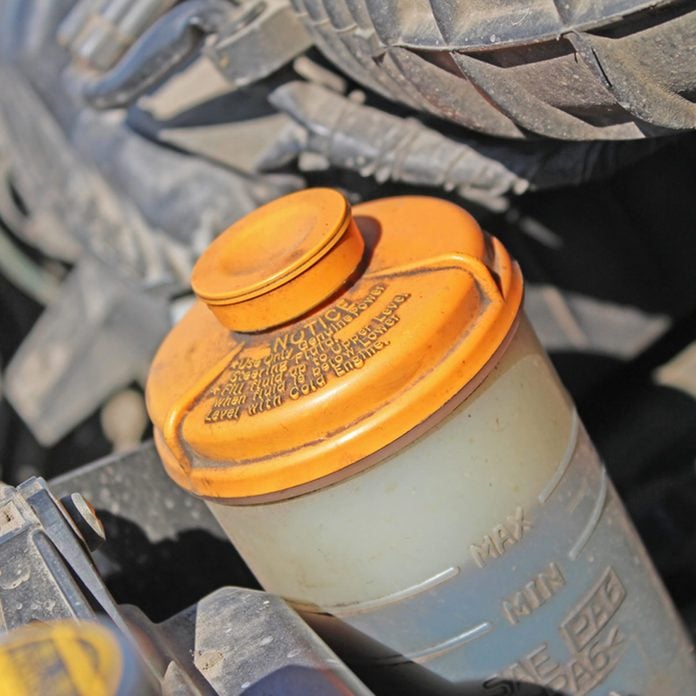
Never Use a “Universal” Fluid in Your Power Steering or Transmission
Several fluid manufacturers claim their “universal” power steering and transmission fluids work in all car makes and models. Car manufacturers disagree, and their arguments against using universal fluids are based on incompatible specifications, not greed.
For example, there’s simply no way a single transmission or power steering fluid can meet the different (and mutually exclusive) viscosity and additive requirements for every transmission and power steering system in use today. In fact, European, Japanese and domestic car makers have differing transmission and power steering fluid requirements from model to model and even year to year.
The recommended fluid for your car’s transmission and power steering system is listed in your owner’s manual. If your local auto parts store doesn’t stock the exact fluid you need, try a different store or buy it at the dealer. It’s simply not worth the risk to use a non-approved fluid in expensive components like your transmission or power steering.

Never Disconnect a Battery Cable to Test the Alternator
Many years ago, you could disconnect a battery cable while the engine was running to test the alternator in your car. If the engine continued to run, that proved the alternator was working.
But it’s a test you should never try on a modern car or truck equipped with computers and electronics. That’s because disconnecting a battery cable while the engine is running causes the alternator to spike a 25-to-125-volt surge within 40 milliseconds after cable removal. That voltage spike can’t damage anything in an old non-computerized car, but it can instantly fry the many computers and expensive electronics used on all late model cars. Repairing the damage can cost a small fortune.
If your car or truck was built after the early 1970s, chances are it has at least one computer. So forget this old trick left over from the “old days” and test your car alternator with a volt meter. Or take your car to an auto parts store that offers a free charging system diagnostic test. Next, learn how a diesel engine works with a diesel exhaust fluid.

Never Drive When Your Oil Light is On
All cars have a “low oil pressure” warning light. If the light comes on while you’re driving, it can mean that your car is dangerously low or completely out of oil. It can also mean your car has a serious leak that’s causing a pressure drop, a clogged oil passage that’s causing oil starvation, or that the oil pump has failed or is failing.
Whatever the cause, when the light comes on, pull off the road immediately and shut off the engine. Then pop the hood and check the oil level using the dipstick. If the dipstick shows you’re out of oil or dangerously low, you must add more oil before restarting. Driving a car when it’s dangerously low or completely out of oil will destroy your engine in just a few minutes, and that can easily cost you thousands.
Don’t think you can drive to the nearest store to get more. It’s not worth the risk. Instead, call a friend or family member and ask them to bring the oil to your location. Or better yet, travel with a jig of oil in your trunk at all times (the recommended type and viscosity is listed in your owner’s manual). Add it to the filler port and check the dipstick to make sure it’s full. Do not overfill.
If the dipstick shows you’ve got oil, the problem is even more serious and must be checked out by a mechanic. There’s really nothing you can do while you’re on the side of the road. If the dipstick shows the engine is full, or you can’t reach a friend to drop off more oil, call a tow truck. If you can’t afford a $200 tow, then you surely can’t afford a new engine.
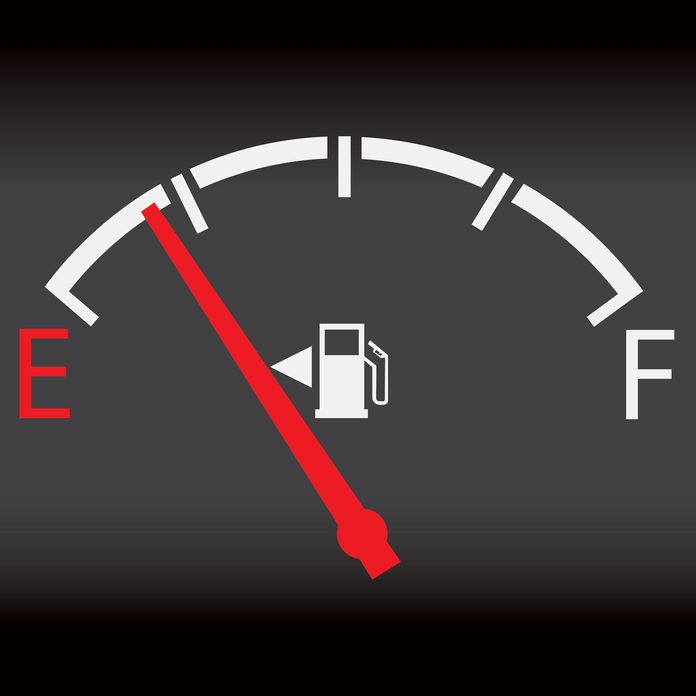
Never Drive With Less Than a Quarter Tank of Gas
The electric fuel pump is located inside the fuel tank on just about every fuel-injected car and truck. Car makers put it there on purpose so it’s cooled and kept at a safe operating temperature by the gas in the tank. But if you consistently drive with less than a quarter tank, the low fuel level can’t always provide enough cooling for the pump, and that can cause early fuel pump failure. Overheating isn’t the only issue, though.
Consistently driving with a low fuel level causes the pump to suck in debris from the bottom of the tank. That debris can pass through the “sock” filter in the tank and the particles can wear out the pump impeller, causing a low fuel pressure situation. This warning doesn’t mean you have to rush to a gas station the instant you hit a quarter tank on the gauge. The fuel pump can easily handle occasional low fuel level operation. But if you consistently drive with less than a quarter tank, you increase your chances of early fuel pump failure and a big repair bill.
Which gasoline should you buy? These are the 10 things you should know about gasoline.
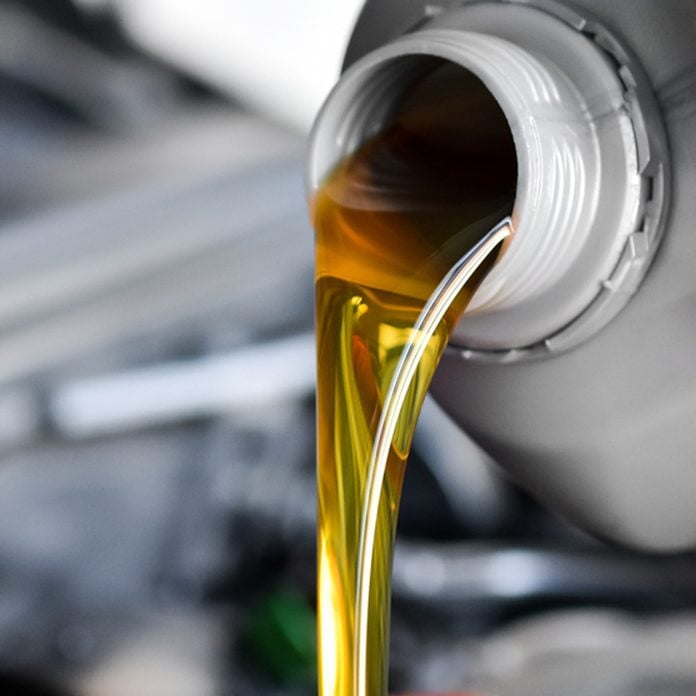
Never Use the Wrong Oil
Greater sophistication in modern vehicle designs means using the right engine oil is crucial. Car makers upped their game on engine design to meet higher mileage standards. Newer engines are built to more exacting tolerances and include high-tech mechanisms like variable valve timing (VVT) and turbochargers to squeeze more power and miles out of every gallon of gas.
VVT systems work by pulsing pressurized oil into hydraulic passages to advance or retard the camshaft. The pulse timing and associated camshaft movement is based on the oil type and viscosity listed in your owner’s manual. It all works great if you use the right oil and it gets messed up if you use the wrong oil. Using the wrong viscosity oil can actually set a trouble code and light the “check engine” light on your dash.
The right oil is just as critical for proper turbocharger operation. A modern turbocharger can spin at rates as high as 240,000 RPM, which means the bearings must be constantly lubricated and cooled by the oil. If you substitute a different oil type or viscosity, you can change the flow rate, causing bearing overheating and early turbo failure. Learn how to choose the right motor oil and filter.
So ignore the advice from your buddies or online “oil experts” and stick with the car manufacturer’s oil recommendation. They designed the engine and they’re in the best position to know what fluids it needs. Wonder if engine additives actually work? Here’s the scoop.
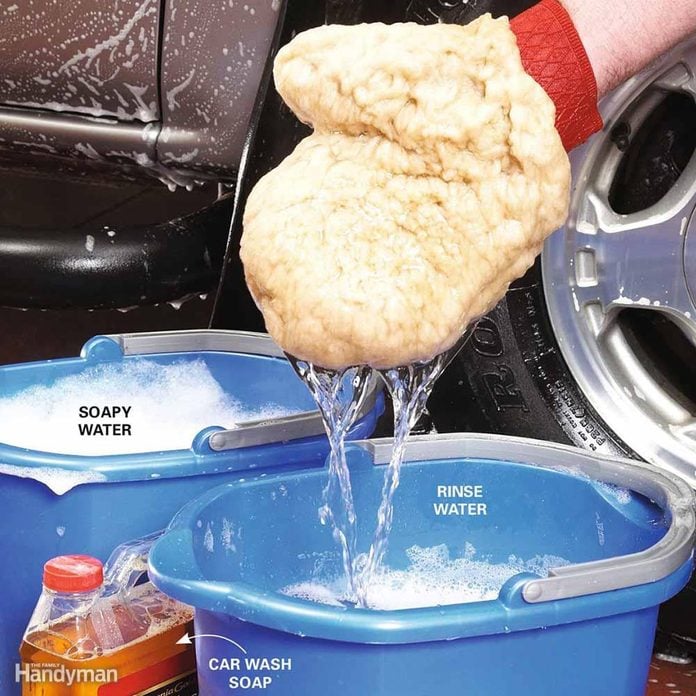
Never Use Dishwashing Detergent to Wash Your Car
Dishwashing detergent is designed to aggressively attack and break down dried on food, oil and grease. That’s great for dishes — not so great for car paint.
Car paint, clear coat and car wax contain oils and resins that maintain the paint’s integrity and filter out harmful UV rays. When you wash your car with dishwashing detergent, you strip off the wax and pull some of those critical oils out of the paint and paint sealants, leaving it bare and exposed to the elements.
If you immediately wax your car with a high-quality wax, you can restore some of the UV protection. If you don’t wax your car after washing with dishwashing detergent, you lose important sun protection. If you regularly wash your car with dishwashing detergent, you’ll degrade the paint and clear coat enough over its life to cause premature fading and even early paint failure.
Car wash soap, on the other hand, is designed to remove dirt and grease without removing the surface wax and oils from the paint. It’s also biodegradable, so the wash water runoff is safer for the environment. Find car wash soap at any auto parts store or in the automotive aisle at most big box stores. It’s cheap and better for your car’s finish. Learn how to restore a faded car interior.
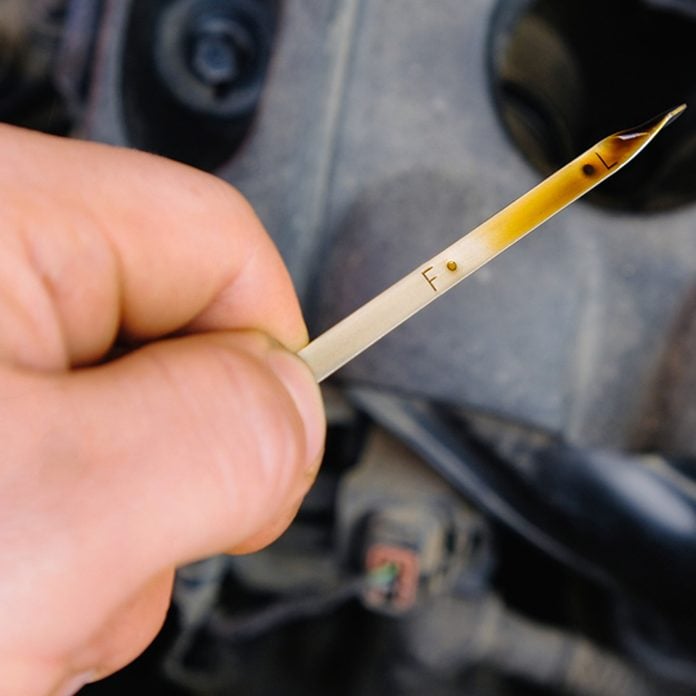
Never Neglect the Dipstick
The oil change intervals listed in your owner’s manual are based on the car maker’s assumption that you’ll not only use the recommended oil, but that you’ll also check the oil on a regular basis and top it off when it’s low. All engines use some oil between oil changes; even some new engines can burn as much as a quart every 1,500 to 3,000 miles. If you never check your dipstick, you’ll never know that you need to add more oil. Worse yet, if you don’t top off your oil, you stress the remaining oil, dramatically reducing its useful life.
Let’s assume the recommended oil change interval for your car is every 7,500 miles. If you burn one quart of oil in the first 3,000 miles and don’t replenish it, you deplete the anti-wear and anti-corrosion additives in the remaining oil by about 25 percent. If you burn no more oil (which is unlikely), your oil will be worn out when you reach 5,600 miles instead of the normal 7,500 miles. If you continue to drive on that depleted oil until you reach the 7,500 mile mark, your engine can experience premature wear and develop sludge deposits. With an engine swap costing thousands, it pays to check your oil regularly and refill when it’s low.
Check out the things you should do to save money by changing your own oil.
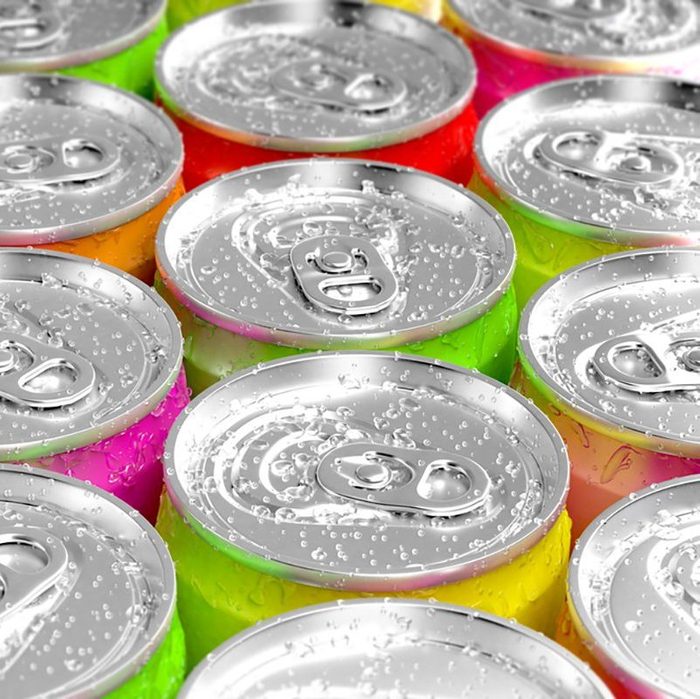
Never Leave Beverages Inside Your Car
Since liquids expand when they freeze, you could be in for a big mess if you leave beverages in your vehicle for extended periods of time when temperatures dip below freezing. Don’t forget to take bottled water, juice, soda and beer inside after your trip to the grocery store.

Never Smoke While Pumping Gas
It may seem like a no-brainer, but you shouldn’t smoke around the gas pump. And this should be obvious, but never ignite lighters or light matches anywhere near a gas pump.

Never Drive Without Shoes On
“Many drivers might be guilty of this,”says Richard Reina, product training director at the aftermarket auto retailer CARiD.com.
It’s not necessarily the least safe thing you can do behind the wheel, but it still isn’t a good idea.
“For instance, you might need to brake very hard suddenly and find yourself unable to apply the proper force with a bare or socked foot as you would with a shoe on,” Reina says. “Additionally, if you need to step out of the car in an emergency, you run the risk of injuring your feet or wasting precious time putting shoes back on.”
Learn other things you really shouldn’t do while driving here.



















